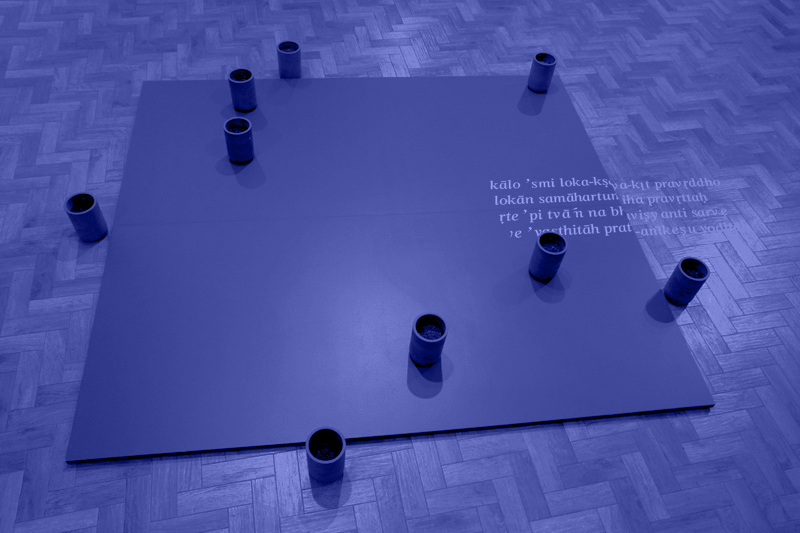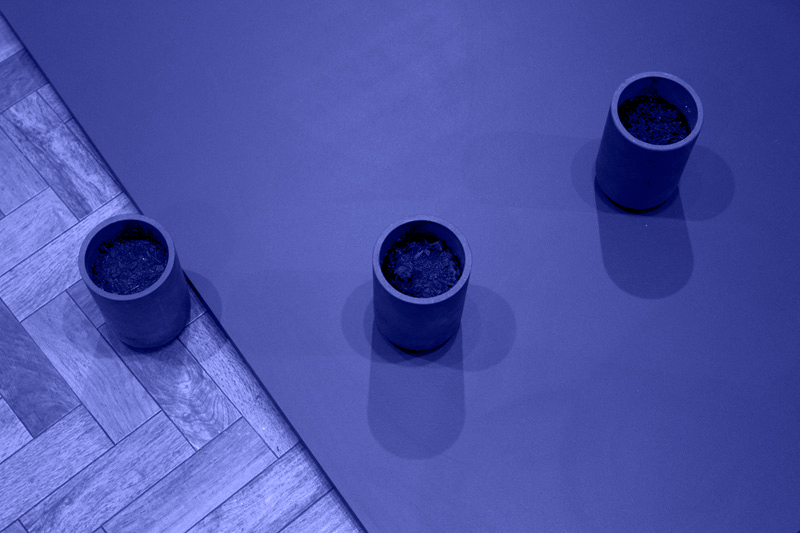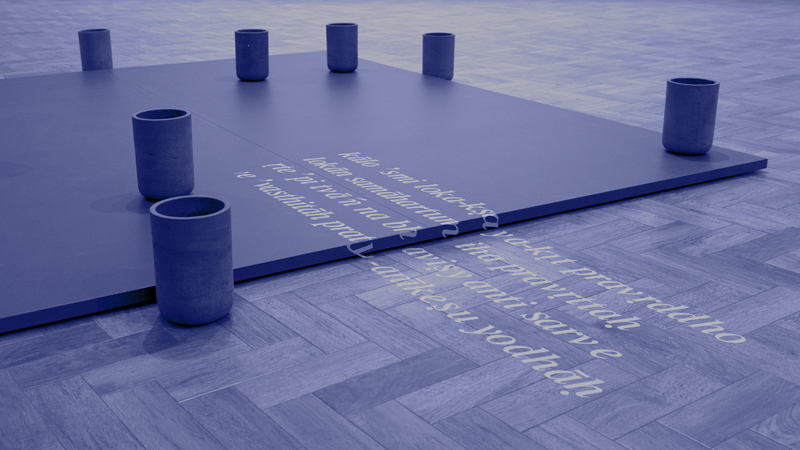


"I am become death, the destroyer of worlds" is a thought-provoking installation that delves into the complex intersection of nuclear history and environmental racism. The title of the piece is taken from the Bhagavad-Gita, a Hindu sacred text, and refers to the words that ran through the mind of J. Robert Oppenheimer, the "father" of the atomic bomb, as he witnessed the first detonation of his creation on July 16, 1945. The installation itself consists of nine cylindrical ceramic vessels, carefully arranged on a steel plate coated with lead paint creating a ritualistic space in the exhibition space. Each vessel contains soil from native land in Australia, which has been made inhospitable due to nuclear testing and uranium mining, as well as seeds of the Rainbow Eucalyptus, a neophyte species known for its multicolored bark and its aggressive competition for light and water. The Rainbow Eucalyptus is often seen as an invasive species, threatening the survival of local flora. The seeds used in the installation have been exposed to nuclear radiation for a period of one full moon cycle. Australia is a major supplier of uranium ore, and much of the mining and nuclear testing that has taken place in the country has been carried out on native land, a fact that the work "Destroyer of Worlds" seeks to bring to the forefront. The piece incorporates postcolonial nuclear history and local environmental racism in a powerful and thought-provoking manner, with a text from the Bhagavad-Gita floating from above the steel plate to the floor, adding a further layer of meaning and connection.
#installation#nuclearhistory #environmentalracism #bhagavadgita#JRobertOppenheimer#atomicbomb#rainbowrucalyptus#nativeland#uraniummining#nucleartesting#postcolonialhistory #leadpaint#ceramicvessels#ritualisticspace#australia#2020